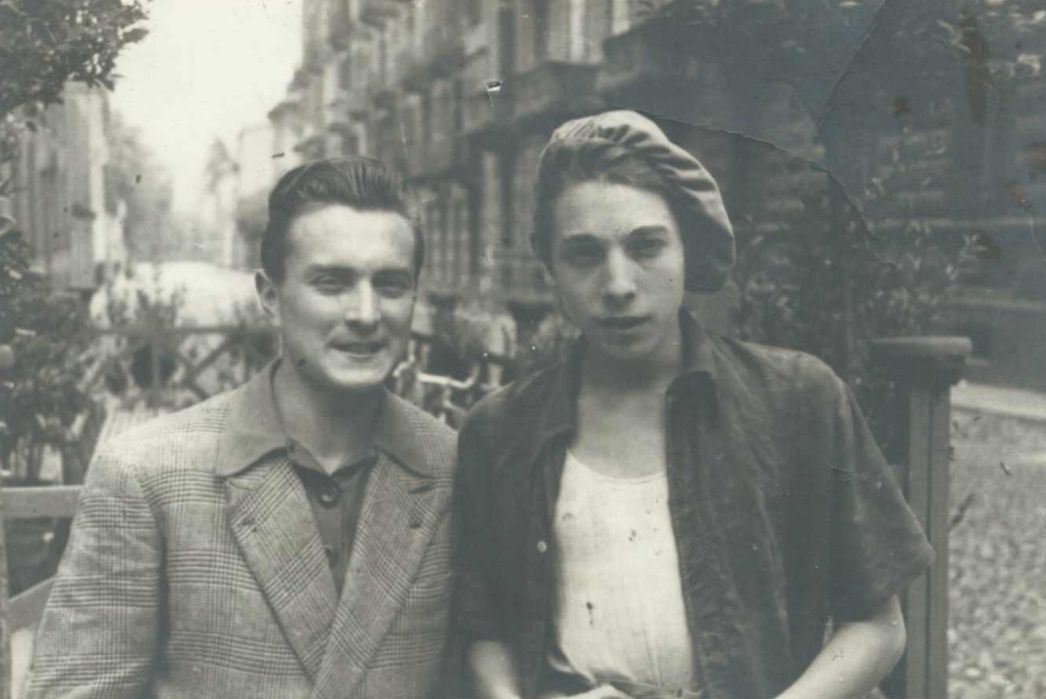Transcript
Narrator In the autumn of 1943, two events in Italy took place in quick succession: German troops occupied the country, and in the south, the Allied forces arrived. The newly deposed dictator Mussolini was able, with the help of the Germans, to build a new regime in the north of the country.
Pio Bigo was 19 years old, living with his parents in Turin. Originally they were country folk; his father had worked as a farmer for years. Pio was a trained mechanic himself. But now he was being conscripted into the military. He was supposed to fight with Mussolini’s Fascist troops on the side of the Germans.
Like many his age, he was firm in his objection to this. Although he had never fought in a war, and didn’t know anything about weapons, he and some of his friends decided to join the partisans, who were in hiding in the mountains north of Turin. Their goal was a free Italy; their enemies were both the Germans and Mussolini’s troops. Pio and his friends were able to come into contact with them.
Pio Bigo And so we went by train to Pessinetto via the Valle di Lanzo. [...] They had named a place and we met there. There were about fifty of us partisans in the alpine cabin, in the cold. [...] Besides our group of fifty young guys, there were also a few members of the military. [...] We called them our fathers because they were older than us and already knew how to handle weapons, whereas we still had to learn.
Narrator The group lived in the mountains for several months. In March 1944, the Germans and the Fascist troops started a large-scale operation against the partisans. This would spell disaster for Pio Bigo and his comrades: he was arrested. Ahead of him lay detention in various concentration camps, the last of which would be Buchenwald.
From an assembly camp in Bergamo, the Germans first deported Pio Bigo to the Mauthausen concentration camp in Austria and from there to various subcamps in Gusen and Linz. In 1944 he was transferred to the Auschwitz concentration camp to perform forced labour, first at Birkenau and later at the Monowitz subcamp. In January of 1945, the SS cleared these camps.
They drove the inmates westward, on foot. In Gleiwitz, Upper Silesia, Pio Bigo and his friend Pasquale escaped being massacred by pure luck: all at once, the SS guard units indiscriminately murdered several hundred inmates.
At the end of January the “Evacuation Transport” – as these transports were called by the SS – finally reached Buchenwald. Pio was suffering greatly from a foot injury from an accident in Linz. But his fellow Italian inmates who had been in Buchenwald for some time took care of him. They also helped Pio to remain in Buchenwald until its liberation.
But it would take a while before he was able to return to Italy:
Pio Bigo We Italians were all together in a barrack and our suffering was over, but we had no idea when we would return home. Sometimes we went to ask about it, but they said that no trains were running, that the bridges had been blasted, and that we had to wait until the Americans gave the command.
Narrator In mid-June, the waiting finally came to an end and Pio Bigo returned to his Italian home. There he worked as a mechanic again and started a family. For many years, nobody wanted to hear his story – for him a painful experience. It was only decades later that he broke his silence.


